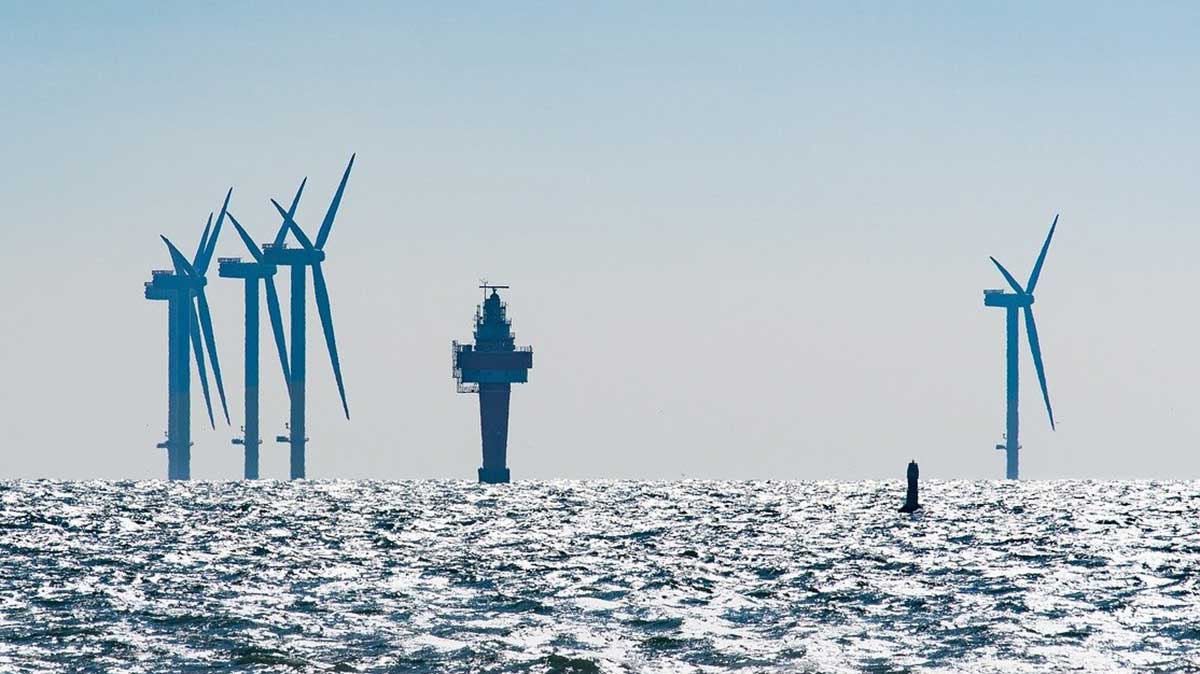
EU leaders have asked the European Commission to set up an “enabling framework” to promote renewable energy projects across borders in a move that could benefit offshore wind.
The EU-level framework would support cross-border projects, like offshore energy production and national renewable energy projects.
The Council’s conclusions, published on Friday (11 December), looked at a wide range of renewable energy production from bottom-fixed and floating offshore wind and tidal to solar, geothermal and biomass.
“The deployment of all renewable energy technologies plays an indispensable role in achieving the EU energy and climate targets, and substantially contributes to achieving a climate-neutral European Union by 2050,” the conclusions state.
Collaboration between countries is particularly important for offshore wind farms, which are inherently international because they are often situated near maritime borders.
The European Commission’s offshore renewable energy strategy, presented on 19 November, aims for a 25-fold increase in offshore wind capacity by 2050. This rapid build-up is expected to cost €789 billion.
“We need to be aware that this investment will need to be at an unprecedented scale and it will have to happen in an environment which is challenging in a number of respects,” said Joachim Balke, a senior official at the European Commission’s energy directorate.
“We’re talking about the offshore environment, where we have relatively little in terms of pre-existing infrastructure. We’re talking about an environment that is inherently multi-national and hence multi-jurisdictional,” he told participants at a EURACTIV event on Tuesday (8 December).
LEAK: EU aims for 25-fold growth in offshore wind by 2050
Offshore wind capacity in the EU “should be multiplied by 25 times by 2050” as the European Commission looks for all possible ways of boosting the share of renewables in energy consumption, according to a draft policy document seen by EURACTIV.
Hybrid projects
To reach its target, the Commission wants to increase the number of joint and hybrid offshore projects, which connect at least two member states and combine electricity generation, transmission and energy trade.
One third of the 300GW of electricity the Commission wants to be produced by offshore renewables by 2050 can and should come from hybrid systems, according to Giles Dickson, CEO of WindEurope, a trade association.
But there is very little legislation for these projects. They are complex because of cross-country negotiations and require an increase in offshore and onshore grid connections, he said at the event.
Currently, hybrid projects are treated as interconnectors under EU electricity market rules and as generation assets in other laws. Because they are both, they need to have their own legislation, said Dickson, expressing hope that the upcoming revision of the EU’s cross-border infrastructure regulation, due on 15 December, will achieve this and improve investment stability.
Countries like Denmark, Germany and the Netherlands have entered detailed discussions on hybrid farms and there are many projects wanting to start, but final investment will not come until the legal framework is clear, Dickson continued.
There is currently only one hybrid site, an offshore windfarm located between Germany and Denmark, which has to operate under a transitional arrangement because of the absence of legislation.
Wojciech Dąbrowski, CEO of Polish energy group PGE, said hybrid projects could help tap further into the potential of offshore wind. “Offshore wind is one of the pillars of PGE’s strategy for 2030,” he told the EURACTIV event, saying this was a key part of Poland’s efforts to phase out coal.
With hybrid projects, he said that potential could be developed much further. “The Baltic Sea is still open to new projects, which could fully unveil its energy potential,” Dąbrowski said in an op-ed.
Offshore bidding zones
The Commission’s offshore renewable energy strategy also promoted the idea of cross-border offshore bidding zones, an idea that was promoted as part of its latest electricity market reform but which was shot down by member states.
Now, however, the system is looked on more favourably. “This approach ensures that renewable electricity can flow to where it is needed,” the Commission argues in its offshore energy strategy. It acknowledges, however, that producers of offshore renewable energy “are likely to receive the lower electricity market price from the markets to which they are connected” as a result.
“The bidding zone concept seems to be more efficient, but you have to recognise this lowers the revenue for the wind parks because they will feed the electricity to the zone where the price is lower,” said Gerald Kaendler, vice chair at ENTSO-E, the European Network of Transmission System Operators.
“The home market concept leads to a little higher income for the offshore wind parks,” he remarked.
Offshore wind should be seen as a joint European resource
The European Commission’s aim of 300 GW of offshore wind capacity exceeds the needs of coastal states, so countries need to work together to hit this target and achieve the full potential of offshore wind, writes Zsuzsanna Pató.
EU leaders welcomed the offshore strategy as a basis for increasing offshore capacity, which is vital for meeting the 55% greenhouse gas reduction target agreed by the Council on Friday.
However, they asked for more guidance on how to implement cross-border energy projects and how to conclude the bilateral and multilateral agreements needed between member states, calling for analysis for fair distribution of costs and benefits and how use of existing funds can enhance this.
Renewable energy deployment also needs the internal energy market to be further integrated through the enhanced interconnectivity among member states, infrastructure and grid development and storage solutions, according to the Council.
This could be achieved using more cross-border projects, which require a high level of investor security.
EU leaders also addressed the challenges that face offshore wind to do with maritime space, following protests from fishermen in France saying turbines disturb fishing grounds.
Source : Eurativ.com

